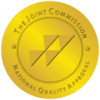How Does MAT for Opioid Addiction Work?


Written By
DreamLife RecoveryMedication-Assisted Treatment (MAT) is a form of substance abuse treatment used to help those struggling with opioid addiction. Like other rehab treatments, MAT for opioid addiction uses a combination of medication and therapy and group counseling as part of the treatment plan. MAT is an effective treatment for individuals struggling with opioid addiction who may require more robust forms of treatment in order to effectively jumpstart the recovery process.
What is Medication-Assisted Treatment
MAT for opioid addiction uses various types of medications to help stabilize the opioid-addicted person and gradually wean them off opioids. Attempting to stop using drugs “cold turkey” could lead to some very dangerous and severe side effects, including coma and death. MAT helps to gradually wean and remove drugs from the body in a safe and controlled way. Furthermore, MAT helps alleviate cravings for opioids, which helps reduce the likelihood of relapse in the early stages of sobriety.
Several medications can be used with MAT for opioid addiction. The most common ones include:
Suboxone
Suboxone is a combination of naltrexone and buprenorphine. This combination can be very effective since it mildly mimics some of the effects of the opioids while having side effects that reduce the risks of suboxone abuse.
Methadone
While methadone is an opioid-like drug when used with MAT, it provides a controlled dosage during treatment to help stabilize the opioid addiction. The effects of methadone are not as intense as other opioids and last much longer. As a result, a person does not experience extreme highs and crashes. Once the person is stabilized, and their other opioid drugs are detoxed, they are gradually weaned off methadone.
Buprenorphine
The chemical components in buprenorphine attach to the same nervous system receptors as opioids. Therefore, the drug does produce similar effects as opioids but at a much lower level. As such, it is often used during detox to reduce withdrawal symptoms.
However, continued use long-term could result in an addiction to buprenorphine. To avoid this situation, when buprenorphine is used for MAT, the person is first weaned off their opioids, then weaned off buprenorphine.
Naltrexone
This replacement medication blocks other drugs from attaching onto the nervous system receptors in the brain. It is considered an opioid antagonist, meaning the chemical components in opioids that bind to the nervous system receptors cannot do so. So, the effects of opioids are gradually reduced until they are no longer able to experience them.
The Benefits of MAT for Opioid Addiction?
One of the primary problems with opioid abuse is that it causes changes in the brain and the central nervous system. The body becomes physically dependent on opioids in order to maintain its new baseline. When a person stops using opioids, withdrawal symptoms often occur and can include:
- Nausea
- Vomiting
- Diarrhea
- Muscle cramps
- Stomach cramps
- Severe headache/migraines
- Uncontrollable shaking
- Hot and cold sweats
- Severe body aches and pains
Withdrawal symptoms can be intense and last for several days or weeks. Due to the severity of the withdrawal symptoms, using MAT for opioid addiction can help:
- Allow for gradual weaning off of opioids while using an opioid-replacement medication.
- Reduce the severity of withdrawal symptoms while going through detox.
- Reduce the cravings for opioids.
- Allow for an easier transition to sobriety.
- Reduce the risks of relapse.
- Help people commit to their treatment plans.
How Long Does MAT for Opioid Addiction Treatment Last?
The length and duration of MAT for opioid addiction will vary from person to person. The severity of the opioid addiction, the length of time the person was abusing opioids, the volume of opioids consumed, and other factors have to be evaluated to determine an appropriate treatment plan.
In general, MAT will begins during the detox. Medications are introduced while the person is being weaned from drugs. As the opioid dose is reduced, the MAT dose is increased. In about two to four weeks, the dangerous withdrawal symptom risks from opioid abuse will have passed and medication doses are adjusted in order to effectively move the person from dependency to full sobriety.
MAT for Opioid Addiction in Pennsylvania
When you want help with your opioid addiction and are considering MAT for opioid addiction as part of your treatment program, assistance is available at DreamLife Recovery. We will create a custom-tailored opioid rehab treatment program based on your needs and objectives.
Our goal is to provide you with the structure and foundation you need when beginning MAT for opioid addiction in a supportive environment that can set you up for long-term sobriety. To learn more about MAT, please feel free to call us at (844) 402-3592 today!






